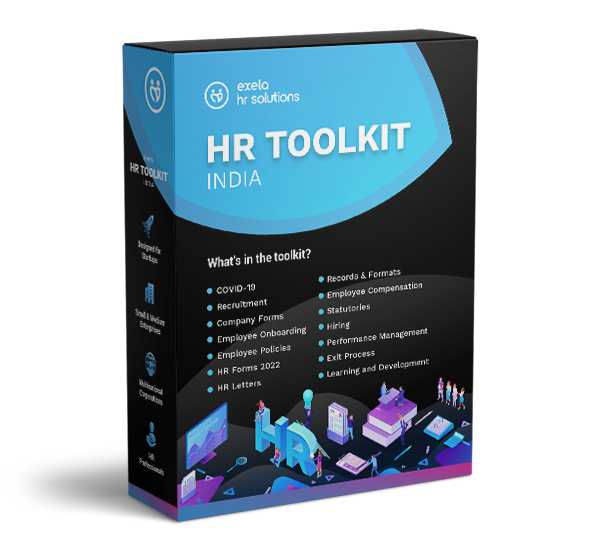
Close your eyes and go back to the times you’ve opened resignation emails from your most productive bunch. Remember those specific instances and try to recall the emotion that first cropped up. No, this isn’t a guided meditation. But, your trip down memory lane will lead to some conclusive revelations about you and your company’s talent retention ideologies.
Understanding your Attrition Control Strategy
Assuming it was your top performer who decided to call it quits. Yes, the same one who shouldered the team’s targets and ensured KPIs got met by averaging the team’s productivity at acceptable thresholds. What is your instant reaction? Do you:
-
Counter their new proposed remuneration till you get a favorable outcome?
-
Entice them with a role or designation swap?
-
Treat them like a traitor with poor work ethics and/or arrange for a loyalty convention program?
-
Respect their decision and let them know their contribution will be cherished?
What’s your Retention Strategy?
So, what did you choose? Would you snoop around precariously to figure out the benefits of their new offer letter? What's important to them and which of their priorities are being addressed by their desire to switch? If it's all about better pay, did it occur to you that maybe you should top that? If they want more flexibility such as work timings, shifts, or location-wise, are you willing to offer suitable options? Or maybe you could arrange for internal projects and upskilling programs that will enlarge their professional portfolio and quench their thirst for noteworthy experience. Or perhaps it's time to show them who's more powerful, the organization and the management or the ones serving at the organization? Connivingly put them on a guilt trip regarding dedication and loyalty, maybe? How about introducing a loyalty bonus for top-performing employees?
Sure, you have a plethora of other options too. But, these would have been the most likely ones. There's no wrong answer so please be as honest as possible when you introspect. It's normal and sane to wish your effective workforce stays with you. There is productivity-based loss, time-related losses, and you also have to factor in the costs of hiring and training newly onboarded employees to desired levels of competency. Yes, a big fat loss is lurking over the horizon! So, there's nothing wrong with wanting them to stay. Talent retention and attrition control are vital to an organization’s sustenance and growth. But, if you react in a way that upholds their dignity and respects their decision after previously exhausting the other options, you're probably a Type 1 company.
Type 2 organizations tend to make decisions based solely on the effect on their organization. Bottom line and the company matter alone. Nothing else matters. Jobs get done by hook or by crook. But, if your answer was option 4, you’re a Type 1 organization. Type 1 organizations understand the value human capital brings in and prioritizes employees. They craft policies and workflows while considering the well-being of their employees. They're not necessarily charitable institutions; it's just that they realize the competitive edge and value that skilled and proficient labor carries. Not just that, they act upon that realization and proactively formulate employee retention strategies to hold on to their competent staff.
Also Read: Understanding and Supporting Flexible Work So Your Workforce Can Thrive
Effective Employee Retention and Attrition Control Strategies
So, back to the example we began with, why would Type 1 companies do nothing significant and let their staff walk away? The answer is very simple. Type 1 companies pay their employees based on the prevalent market rate and their specific individual market value. Unlike most companies that offer compensation based on what a professional was earning in their previous organization, a Type 1 organization factors in other computable factors affecting KPIs apart from an employee’s last drawn CTC.
Every company has an appraisal limit. This usually averages around 10-20%. But, the hiring policy allows for an increment varying from 30% to a steep 100% hike. Instead of being rigid about these policies, Type 1 companies factor in productivity and profitability-based values that individual employees bring in. This keeps the workforce highly motivated, engaged, and loyal to the company. Employees understand although they're working for a salary, that salary is based on their potency and contribution, and their company values their efforts proportionately. If any employee still finds a reason to leave the organization, Type 1 management must move past talent retention and respect that decision.

Okay, let’s not cry over spilled milk now; it’s time to react. Your star performer wishes to bid adieu. What next? How do you deal with the vacuum that is created after your star employee leaves? Do you:
-
Fill in the slot with someone who has an upgraded set of skills?
-
Hire someone with skills and qualifications on par with your former employee?
-
Or maybe go the cost-effective way and hire an absolute rookie with no experience?
If you chose option 3, you clearly belong to the Type 2 category. A Type 1 organization will always try to fill the open position with someone who has a better skill set. It is but consequential that this type will enjoy an overall boost in productivity, enhanced and more effective customer service, and a bump in revenue due to their decision to scout for better talent. Type 2 on the other hand, with their poorly skilled recruit, is more likely to lose revenue and talented employees to their competition. Not just that, it paints a poor image among all the other employees watching their actions. Staff begins to realize that productivity does not matter and probably goes away unnoticed. So the remainder of your competent employees within that specific team may begin to feel demotivated. Soon, this attitude spreads like a contagious disease and your entire work culture will reek of indifferent staff.
Employee Retention strategies to Future-proof your talent pool
Let’s say, you managed to find a suitable candidate that matches your requirement. Phew, that was tough. This realization perhaps prompts you to safeguard your company from similar separation shocks in the future. Sure, forecasting and strategic planning are essential staples in every business toolkit. But, how do you wish to go about it?
-
Wait for background check calls to provide maleficent reports regarding your employee who wishes to sever professional ties?
-
Revise your company’s HR policy stretching the notice period for high attrition level slabs to an unviable six months?
-
Train the rest of your team members well enough so they can fill in for each other and switch roles in the absence of a colleague?
If you chose options 1 or 2, sure, that ought to deter them! That’s quite a vindictive shock absorbent suspension buffer. But, a Type 1 organization would never do that. That’s because Type 1 realizes that both the company and its people are vital to the survival and growth of any company. Instead of chasing former employees, it would be prudent to allocate your time and resources towards formulating a backup strategy that stands to improve the general productivity of the entire team. That’s option 3, by the way.
Okay, enough with the attrition control nightmares, let’s consider another situation. How does your organization deal with employee feedback? Which of these responses best conveys your strategy?
-
Say what now? We’re listening to the worker bees; what for?
-
Of course, we have office picnics and an annual festive meet where employees usually compliment us on the arrangements and are very grateful for the celebrations.
-
We schedule monthly/quarterly/annual employee engagement meetings where top-level management is accessible to all employees. The minutes are recorded and every matter is pursued with appropriate solutions and active status tracking.
Making employees feel heard is only half the battle won. If you stop there, you’re a Type 2 organization. Making employees feel heard is good but if you are not reinforcing that with concrete change, your employees will put you in the Type 2 bucket. But, what's wrong with being labeled as Type 2, you ask? It's just that Type 1 is a more sustainable business model. In this case, feedback that is actioned builds trust among the workforce, which contributes to building resilient teams that stay loyal. It’s relatively difficult for a Type 2 model to sustain the test of time because employees blow where the wind takes them. It’s all about the wages then, period!
Is Redemption possible?
So, what if you’re the classic example of a Type 2 organization? Fret not! Type 2 organizations can easily convert to Type 1 structures with a little tweak in management vision and company mission. It’s all about genuinely attempting to put employees at the forefront of decisions, which is understandably hard. We're not saying thou shalt pamper thy employees. Sure, nobody is indispensable. But, Type 2 organizations have a rather extremist opinion in this sphere. Type 1 is more practical and balanced in its approach.
Trying to find Balance?
Exela HR Solutions offers end-to-end expert HR services to businesses across different locations and industries. We have technical as well as value-based customized solutions that can bring about as much transformation as you require to future-proof your workforce and facilitate employee retention. Get in touch to learn more about our offerings.
DISCLAIMER: The information on this site is for general information purposes only and is not intended to serve as legal advice. Laws governing the subject matter may change quickly and Exela cannot guarantee that all the information on this site is current or correct. Should you have specific legal questions about any of the information on this site, you should consult with a licensed attorney in your area.





